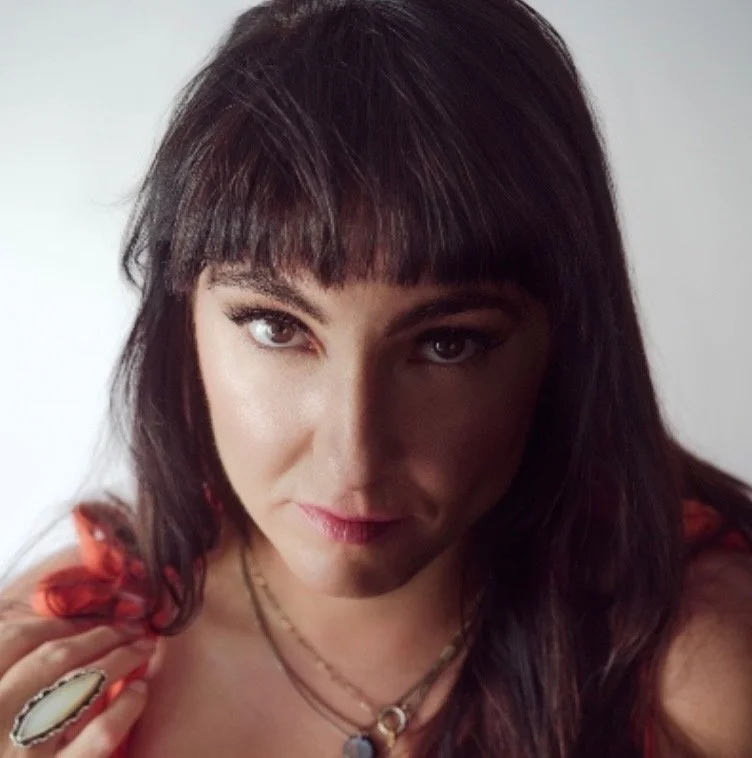RACE, POWER AND STORYTELLING: AN INTERVIEW WITH ERIKA T. WURTH
Erika T. Wurth’s novel WHITE HORSE is a New York Times editors pick, a Good Morning America buzz pick, and an Indie Next, Target book of the Month, and Book of the Month Pick. She is both a Kenyon and Sewanee fellow, has published in The Kenyon Review, Buzzfeed, and The Writer’s Chronicle, and is a narrative artist for the Meow Wolf Denver installation. She is an urban Native of Apache/Chickasaw/Cherokee descent. She is represented by Rebecca Friedman for books, and Dana Spector for film. She lives in Denver with her partner, step-kids and two incredibly fluffy dogs.
Namrata Poddar writes fiction and nonfiction, serves as Interviews Editor for Kweli, and teaches literature and writing at UCLA. Her work has appeared in several publications including Poets & Writers, Literary Hub, Longreads, The Kenyon Review, and The Best Asian Short Stories. Her debut novel, BORDER LESS, is a finalist for the Foreword Indies Book of the Year Award, and longlisted for The Center for Fiction First Novel Prize. She holds a PhD in French literature from the University of Pennsylvania, an MFA in Fiction from Bennington College, and a Mellon Postdoctoral Fellowship in Transnational Cultures from UCLA.
NP: In October 2022, PEN America published a report on “Race, Equity, and Book Publishing” that reiterated what many of us know. The report noted: “95 percent of American fiction books published between 1950 and 2018 were written by white people.” While “diversity” has increasingly become a buzzword in the book business, and while the United States currently has about 42 percent of its demographic as people of color, the report confirmed, “the publishing industry, and the books it puts out, remain disproportionately white.” In this landscape of American publishing, and literature at large, what is your take on the status of Indigenous storytelling and its visibility? When it comes to Indigenous voices, where are you seeing a genuine change over a performance of diversity?
EW: I have worked 20 years, publishing articles, helping people get editors or agents, to see what’s happening with indigenous fiction now. At this point in time, and I will break myself rather than see it move backwards, urban Natives, Black Natives, Latinx Natives, Natives from different reservations, all working in different traditions—realism, crime, speculative— are publishing within the big five and/or strong indie presses. There are those outside of and unfortunately within our communities that don’t like this, that want it to go back to there being only one— but there are so many good people working against those conservative and frankly spiritually ill agitators, and I think things are going to continue to go in positive directions.
NP: As an author, you’ve published several books across genres including novels, short stories and poetry. And while every book is its own journey for most authors, did White Horse feel different with its process, of both writing it and finding a home for it?
EW: Though I do write the occasional short story or article when I’m commissioned, some of what’s happened is that I have transitioned fully into novel writing. I’ve been writing novels for over a decade but what changed was two significant things. First of all, I was always interested in story, and in structure— but because I was in academia for so long, those things weren’t talked about much. People talked a lot about language or concept and sometimes characterization, but every time I said I didn’t think I had a good sense of how plot or structure worked, people would dismiss it and say oh that’s Hollywood stuff. There are so many concrete ways to utilize structure and plot and reading more nuts-and-bolts books really helped with that. This idea that it’s either paint by numbers or a free-for-all seems limiting. Additionally, I’d also been taught by academia that the only thing worth writing was literary, and yet I wasn’t given a good definition of what literary was. All that I knew was that it was realism content and/or post modern aesthetics— but when you asked people to define it, the best they could usually come up with was “good” or concerned with language. I think that literary is a couple of concrete things—and it doesn’t matter what genre you’re writing in, because literary isn’t a genre, it’s a series of conventions: Complex characterization, depth of theme, and attention to form and language. Additionally, I had been a really dorky kid and I loved Science Fiction and fantasy and horror, and I realized that I wanted to come back around to horror. It’s been tremendously fun and rewarding, and I still utilize the conventions of literary fiction.
NP: A key focus in White Horse is the protagonist Kari who is haunted by her mother, Cecilia’s ghost and propelled into finding out who murdered her. Literary horror, and ghost stories at large, have a strong legacy in Latin American, Caribbean and African American literature. Where do you see “literary horror” as a genre within the tradition of Indigenous storytelling? Also, since your novel alternates constantly between the real and the surreal, what were some of your challenges with craft when writing White Horse, especially within an American literary landscape dominated by the realist novel?
EW: As I stated above, increasingly we have indigenous people writing in Speculative and crime traditions. David Heska Wanbli Weiden in crime. BL Blanchard and Daniel H. Wilson in science-fiction, Rebecca Roanhorse in fantasy, and my Indigenous brother from another mother in horror, Stephen Graham Jones. All of us draw from some form of indigenous stories, but a tremendous amount of it is poetic license and individual imagination. As far as challenges, that’s part of what’s great about horror is that it takes place in the real world often, but it’s inhabited by ghosts or Cryptids. Primarily, I wanted to learn how to create fear on the page. Not everybody was scared by White Horse, but one of the most fun things I learned on tour was that someone had thrown my book across the room, and I remember throwing one of Stephen King’s books across the room when I was a kid.
NP: What I love in White Horse is a powerful juxtaposition of the horrors of both colonial and family history (latter, especially with Cecilia’s murder) alongside the presence of a certain spirituality, most visible through the bracelet Kari receives from her cousin Debbie, a piece of Indian jewelry standing for heritage, history and healing powers. The association of gemstones and precious metals with healing is a part of several cultures, including my South Asian one. Moreover, clothing and jewelry are ways in which women across cultures have continued to affirm their identity. As a storyteller, why was it important to you to foreground Indian jewelry over another cultural artefact as a key detail in White Horse?
EW: The bracelet is based off of a copper bracelet that I inherited, and again, I used my individual poetic license and imagination to create a much richer world for the bracelet and therefore for the book.
NP: I love how your novel centers relationships among women—these include Kari’s relationship with her deceased, activist mother, Cecilia, and Kari’s friendships with her deceased, Black friend, Jaime, as well as her cousin, Debbie. In centering relationships between women, were you continuing an obvious, pre-existing legacy within Indigenous literature, or creating one you longed to see?
EW: I can’t speak for all Indigenous people in the past or now, but I can say that overall Indigenous women and indigenous folks of all genders, primarily enjoyed a much more egalitarian culture. I do think there are some leftovers of this in many contemporary Native spaces, and I did want to show that. I also wanted to show that for a lot of Native families, they have a lot of family members who are not Native and that they can still share kinship and space. However, there is a tremendous amount of rage directed at successful Indigenous women from some in the Indigenous community, and we have to suffer through grotesque forms of patriarchy, often enacted by women and certainly by men.
NP: Who are some of the writers you see as literary parents to White Horse? And siblings?
EW: I love Mexican Gothic by Silvia Moreno Garcia. The Southern Book Club’s Guide to Slaying Vampires by Grady Hendrix. The Ballad of Black Tom by Victor LaValle. And I think V Castro’s The Haunting of Alejandra is going to be a banger.
NP: What are you working on these days?
EW: I’ve just signed the contract for my next novel, Room 904. It’s about Olivia Becente, a paranormal detective who is hired to look into the paranormal seeming murder with cult ties at the Brown Palace where her sister suicided. Every nine years two women check in, and three weeks later, in succession, they’re dead. Olivia’s not going to take the case, but when her mother checks in, her mom has three weeks to live.





